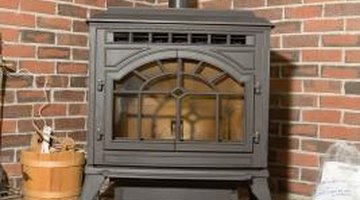How to Calculate a Stovepipe Diameter
Restoring a traditional wood-burning stove usually means having to replace its pipes. The diameter of a stovepipe is an important piece of information to have when purchasing replacement pipe pieces. You can find the diameter through basic geometry in order to avoid having to scrutinize the pipe for any markings. Quickly calculating the diameter of the pipe can allow you more time to spend on the restoration.

-
Wrap the tape measure around the stovepipe on the crimp to measure its circumference. The crimp is the end part of the stove pipe that has vertical creasing that allows the pipes to connect together. As an example, we'll say that the stovepipe's circumference is 15 11/16 inches.
-
Divide the numerator of the fraction by its denominator to obtain its decimal equivalent, then add that number to the whole inches obtained in the circumference measurement. This will convert the measurement into decimal notation. In our example, dividing 11 by 16 results in .6875, so we add .6875 to 15 for a total circumference of 15.6875.
-
Round this number to include only two decimal places. Following our example, 15.6875 would be rounded to 15.69.
-
Divide the circumference by the numerical constant π with your calculator. The constant π has an approximate value of 3.14. Using the example, you would divide 15.69 by π and get a result of 4.99 inches. This number is the diameter of the stovepipe.
References
- "Home Fires Burning: The History of Domestic Cooking and Heating"; Lawrence Wright; 1964
- Math Goodies: Circumference
Tips
- If you are not able to find a stove pipe with the exact diameter, order one that is a little larger. It is easier to close the crimp of the stove pipe further than to open it wider.
Writer Bio
Chance E. Gartneer began writing professionally in 2008 working in conjunction with FEMA. He has the unofficial record for the most undergraduate hours at the University of Texas at Austin. When not working on his children's book masterpiece, he writes educational pieces focusing on early mathematics and ESL topics.
Photo Credits
- Jupiterimages/Photos.com/Getty Images
More Articles



